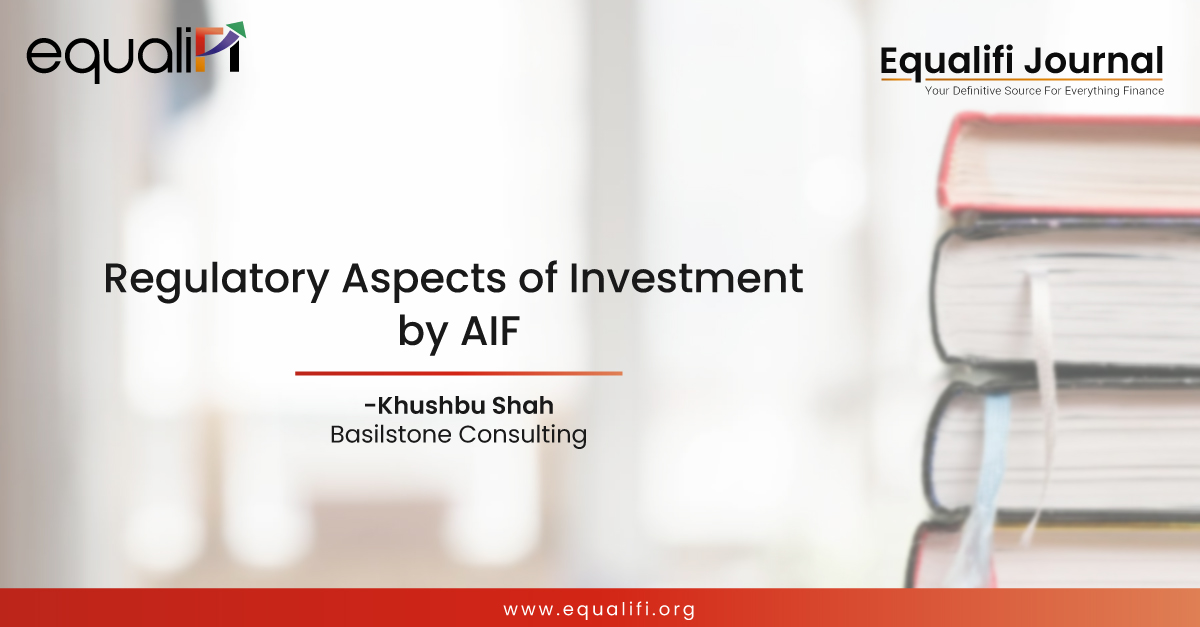Ireland as a Domicile for Investment Funds Investing in India
Posted on: January 18, 2024 | By:
Increasingly Ireland has proven to be the domicile of choice for asset managers seeking to establish investment funds investing in India which can be marketed to European and global investors. Since 2018, there has been significant interest by Indian asset managers seeking to establish and manage an EU fund that can be marketed easily across the European Union to investors who anticipate further growth in the Indian market as it begins to realise its undoubted potential.
This interest has been enhanced by the relaxation of the foreign investment rules and the permanent establishment rules in India and more recently the proposed inclusion from June 2024 of Indian government bonds in the JPMorgan Government Bond Index-Emerging Markets (GBI-EM).
Dillon Eustace LLP currently acts for a number of Irish domiciled funds established by Indian asset managers.
Why Ireland?
There are a number of reasons why an Indian asset manager may choose Ireland as a domicile for its offshore investment fund but the principle reasons are:
- The regulatory environment.
- The common law legal system that Ireland and India share;
- Tax efficiencies; and global reach given Ireland is a major hub for cross- border distribution and Irish
funds are sold in 90 countries across Europe, the Americas, Asia and the Pacific, the Middle East and
Africa
Ireland is an internationally recognised jurisdiction with membership of the EU, Eurozone, OECD, FATF and IOSCO.
Ireland’s tax regime is highly efficient, clear and certain, open, transparent and fully compliant with OECD guidelines and EU law. Irish regulated funds are exempt from Irish tax on income and gains derived from their investments and unlike Luxembourg funds are not subject to any Irish tax on their net asset value. There are additionally no net asset, transfer or capital taxes on the issue, transfer or redemption of units owned by non-Irish resident investors. Other than in respect of certain funds which hold interests in Irish real estate (or particular types of Irish real estate related assets), non- Irish investors are not subject to Irish tax on their investment and do not incur any withholding taxes on payments from the Irish fund. Ireland has one of the most developed and favourable tax treaty networks in the world, spanning over 70 countries including India resulting in reduced withholding taxes on income/gains from underlying investments.
Irish Fund Legal Structures
Although Irish funds can be established in many legal forms such as an investment company, unit trust, investment limited partnership and common contractual fund, the Irish Collective Asset- management Vehicle or ICAV is the most commonly used legal structure. The ICAV is a corporate structure and provides the maximum flexibility for the operation of a collective investment scheme.
The ICAV, similar to an Irish unit trust or Irish ILP, can “check-the-box” to be treated as a partnership for US tax purposes and therefore can facilitate investment by U.S. taxable investors and, where no borrowing for investment purposes, U.S. tax-exempt investors.
Where an Irish ICAV, unit trust or ILP “checks- the-box” to be treated as a partnership for US tax purposes and borrows for investment purposes, such fund will generally not be distributed to US tax exempt investors because such investors may be subject to tax on “unrelated business tax Income” i.e., income derived from debt-financed property and gains from the disposition of such property. In such circumstance, a master / feeder structure is generally considered whereby the feeder fund which checks the box to be treated as a “corporate blocker” for US federal tax purposes facilitates investment by US tax exempt investors and generally non-US investors and the master fund which checks the box to be treated as a “partnership” for US federal tax purposes facilitates investment by US taxable investors.
Irish Fund Regulatory Structures
The regulatory fund structures in Ireland are UCITS and non-UCITS (the latter of which are referred to as “Alternative Investment Funds” or “AIFs”). Irish UCITS
Irish UCITS funds have a global brand in that they are recognised and sold in over 90 countries worldwide.
UCITS are subject to EU rules relating to
- Eligible assets (i.e. transferable securities, money market instruments, deposits, collective investment schemes (CIS) equivalent to UCITS, exchange-traded and OTC derivatives giving exposure to UCITS eligible assets, currencies, foreign exchange rates, interest rates or financial indices);
- Investment diversification and concentration limits; and borrowing and leverage restrictions. Transferable securities invested in by a UCITS must be listed or traded on a “Regulated Market” subject to no more than 10% of NAV invested in aggregate in transferable securities not listed on a Regulated Market and certain types of money market instruments.
UCITS are open-ended in that redemption frequency must be at least twice a month. Consequently a UCITS’ assets must be sufficiently liquid in order to meet redemption requests. UCITS can be marketed globally but in particular UCITS can use their regulatory passport to market cross border within EEA to retail and professional investors without having to seek separate authorisation in each host EU Member State.
Irish AIFs
An Irish AIF can be authorised and regulated by the Central Bank of Ireland as a
- Retail Investor AIF or “RIAIF” (i.e. an AIF marketed to retail investors) As a RIAIF is marketed to retail investors, the Central Bank of Ireland imposes UCITS like investment, borrowing and leverage restrictions on such funds However, as the RIAIF can only be marketed to retail investors in an EEA member state subject to the national private placement rules of that EEA member state (i.e. no passport to market cross border to retail investors within EEA applies), the RIAIF is not widely used.
- Qualifying investor AIF or “QIAIF” which can be marketed to Qualifying Investors only i.e. a “professional investor” (as defined under the EU MiFID Directive); or an investor appraised as having appropriate expertise, experience and knowledge to adequately understand the investment; or an investor who certifies itself as being an “informed investor” (i.e. certifies it is aware of the risk involved in the proposed investment and of the fact that inherent in such investments is the potential to lose all of the sum invested).
As a result, the Central Bank of Ireland imposes very few investment, borrowing and leverage restrictions on QIAIFs. In addition, QIAIFs are subject to a minimum initial subscription requirement per investor of €100,000 (or equivalent).
A QIAIF is typically used for “alternative” strategies:
- Concentrated or highly leveraged portfolios of UCITS eligible assets
(which do not easily align with the UCITS rules); - Portfolios comprising ineligible UCITS assets or using strategies not consistent
with UCITS rules (e.g. certain hedge funds); - Private equity / private debt;
- Private credit funds;
- And /or real estate
A QIAIF can be marketed globally but in particular the EU authorised AIFM of the QIAIF can use its regulatory passport to market cross border within EEA to professional investors without having to seek separate authorisation in each host EEA Member State.
European Long Term Investment Fund or “ELTIF” The purpose of the ELTIF is to facilitate the raising and channelling of capitalELTIFs must invest a minimum of 55% of capital in “Eligible
Investment Assets” (such as private assets, loans, real assets, real estate, etc.) and can invest up 45% of capital in certain UCITS eligible assets.
An ELTIF can be marketed cross border within EEA to retail and/or professional investors using the regulatory passport of the EU authorised AIFM of the ELTIF. However additional rules apply where the ELTIF is marketed to retail investors e.g., assessment of suitability, product governance rules etc. In addition, certain investment diversification and concentration rules apply where an ELTIF can be marketed to retail investors.
Timeframe for Authorisation of an Irish Regulated Fund
Before an Irish regulated fund may commence any activities, the fund must be authorised by the Central Bank of Ireland
The timeframe for the establishment and authorisation of an externally managed UCITS or AIF marketed to retail investors is generally four months taking into account the fact that once the prospectus is drafted and stakeholders have had an opportunity to review and comment on the draft prospectus, it must be submitted to the Central Bank for review and clearance before a formal application for authorisation of the fund may be submitted. Such an application must include all relevant fund documentation such as the final prospectus, constitutional document and service agreements.
The timeframe for the establishment and authorisation of an externally managed QIAIF or ELTIF marketed to professional investors is shorter than that for a UCITS given the Central Bank does not require to review any fund documentation in advance of authorisation of the QIAIF.
Notwithstanding the above, the overall timeframe for the establishment and authorisation of an externally managed UCITS or AIF is project dependent and among the milestones that require to be met on a timely basis to ensure that a reasonable timeframe is achievable is the selection of service providers, the Central Bank pre-approval of the directors of the Irish fund and of the investment manager and the finalisation of the prospectus, constitutional document and service agreements.
Irish Funds established by Indian Managers to date
To date, Indian managers have established Irish-regulated funds in order to access global markets but these funds have focused on Indian public investments. Such Irish regulated funds have principally been established using the UCITS regulatory fund structure but in some cases, the Irish QIAIF regulatory structure has been used particularly where there were concerns regarding compliance with the UCITS investment
diversification limits given the concentration of the proposed portfolio.
FPI Registration of such Irish Funds
Such Irish regulated funds obtained a foreign portfolio investor (“FPI”) licence on the basis that such funds were appropriately regulated broad based funds. Although the application for the FPI licence can be prepared in tandem with the Irish fund authorisation process, registration was only finalised once authorisation of the relevant Irish regulated fund had been obtained. The applications were made via the local Indian custodian (the “Designated Depository Participant” or “DDP”) who is designated by the Securities and Exchange Board of India to process such applications.
Section 9A Approval in certain cases
Some of the Irish regulated funds established opted to seek safe harbour under S-9A of the Indian Income Tax Act 1961 as amended once the Irish fund was authorised by the Central Bank of Ireland and before launch. Such Irish funds were generally those that benefited from reduced withholding taxes under the Ireland India Double Taxation Agreement. This involved an application for approval by the Irish fund to the Central Board of Direct Taxes of the Indian Government Ministry of Finance under Section 9A of the Indian Income Tax Act 1961.
However, some of the Irish funds established, in particular those investing in Indian equities, did not insist on S-9A approval as a pre-condition to investing in India on the basis that there was no benefit under the Ireland India Double Taxation Agreement in respect of capital gains on Indian equities and any dividend income arising was expected to be non-existent or nominal.
Other Opportunities for Indian Managers
Notwithstanding the focus on Indian public markets to date, there is potential for Indian managers to access the full EEA market through Irish-domiciled AIFs investing in Indian private markets subject to the Indian Foreign Exchange Management Act and rules/regulations thereunder.
Global managers use Ireland as a fund domicile in order to invest in private markets (such as private debt, private equity, venture capital, real estate and real economy assets) and in certain cases in order to obtain full access to the EEA market.
Consequently, there is potential for Indian managers to invest directly, subject to the Indian Foreign Exchange Management Act and rules / regulations thereunder, in Indian private markets through an Irish QIAIF or Irish ELTIF in order to access the EEA market (i.e., to market to professional investors within the EEA in the case of the Irish QIAIF and to market to both retail and/or professional investors within the EEA in the case of the Irish ELTIF).
In addition, there is potential for Indian managers to invest indirectly via a non-EU AIF (e.g., an AIF domiciled in India, Gift City, Mauritius or Singapore) subject to the Indian Foreign Exchange Management Act and rules/regulations thereunder, in Indian private markets through an Irish QIAIF in order to access the EEA market.
Under the rules of the EU AIFM Directive, an AIF can access the full EEA market where the AIF is managed by an EU authorised AIFM. However, this flexibility does not apply in the case of an EU-domiciled feeder fund where the master fund is not an EU AIF or the manager of the master fund is not an EU authorised AIFM. Notwithstanding this, Indian managers in the public and private markets can ensure full access
That invests up to 85% of its assets in an underlying AIF managed by the Indian manager with the balance of the assets being invested either directly (including co-investments) or indirectly via another AIF managed by the Indian manager provided the investment strategies of each of the underlying AIFs vary in some way. Such a structure is acceptable to the Central Bank of Ireland subject to an increased minimum subscription requirement of Euro 500,000 or its equivalent, which requirement arises where more than 50% of the assets of an Irish QIAIF maybe invested in AIFs which do not benefit from an equivalent level of investor protection to that provided under Irish laws governing QIAIFs








